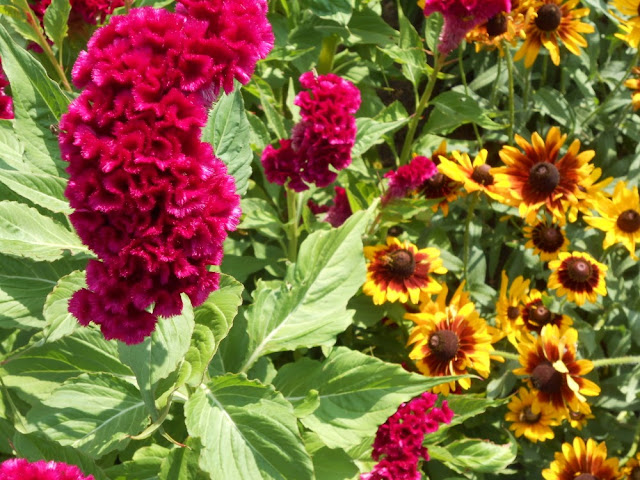Barring critters (four- and two-legged) and cantankerous weather, it looks like we're going to have a good crop of Moon & Stars melons in the heirloom garden later on.
I took time to admire these Saturday morning after standing on my head in the tomato patch for half an hour gathering a sackful to take up to the museum office for distribution later on to anyone who wanted them. My favorite tiny yellow pear-shaped variety is the trickiest to locate in the mounds of unstaked foliage. Clusters ripen way down at ground level and finding them is a treasure hunt.
It's kind of obvious why these melons are called Moon & Stars. The dark green skin of each is decorated by at least one big yellow patch surrounded by dozens of smaller ones. They'll average 20-50 pounds when mature. These are old-fashioned sweet seeded melons and the seeds reportedly are big ones. So those partial to new-fangled seedless varieties may not care for them. The foliage is speckled, too, adding interest even before melons set on.
The variety is not an ancient one, however. It was introduced in 1926 by Peter Henderson & Co. and widely grown, but eventually disappeared from commerical markets and by 1981 was thought to be extinct, according to Amy Goldman ("Melons for the Passionate Grower," Artisan: 2002).
Then Merle Van Doren of Macon, Missouri, who was still growing them, shared seed with Kent Whealy, co-founder of Seed Savers Exchange --- and the rest is history.
Critters sampled the Indian corn overnight Friday, but we're hoping this doesn't become a habit. So far, the three-sisters plantings --- corn surrounded by squash and providing support for beans --- have flourished.
And yes, I know, there are those who color-coordinate their gardens. I know the colors clash. But who the heck cares?
And yes, I know, there are those who color-coordinate their gardens. I know the colors clash. But who the heck cares?






No comments:
Post a Comment